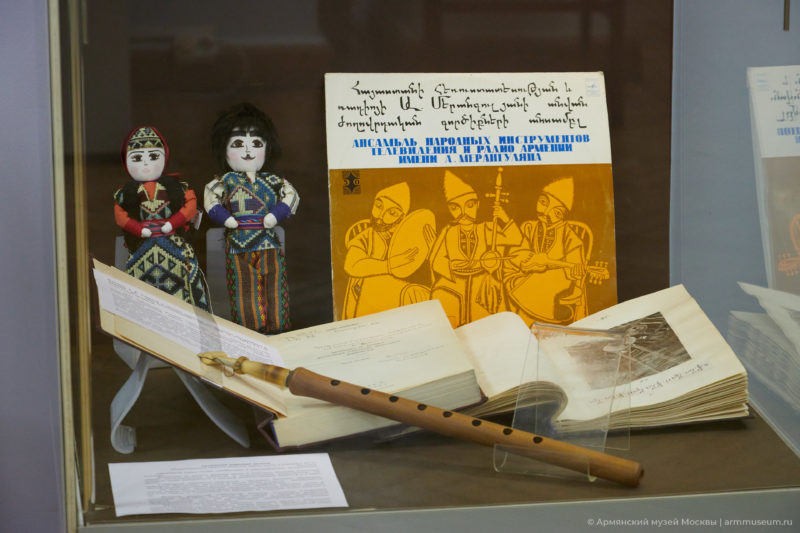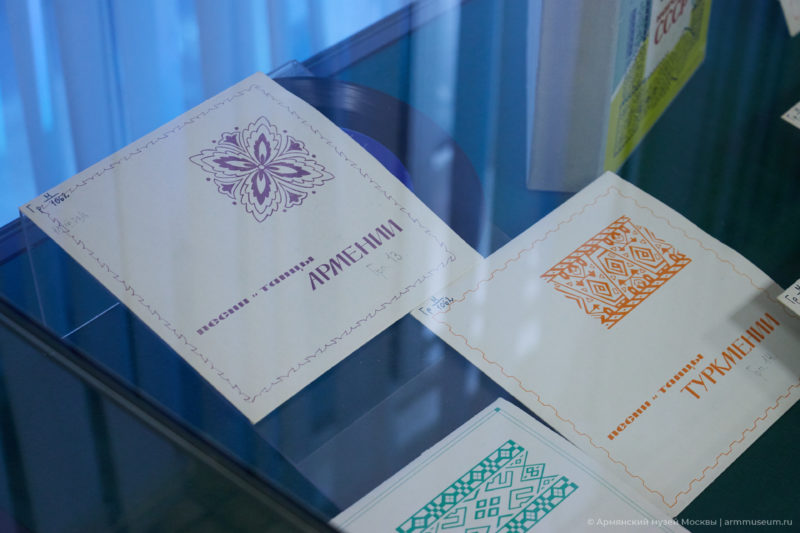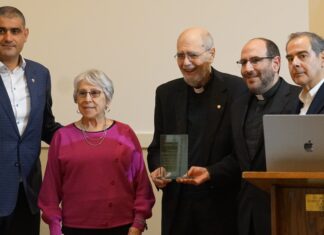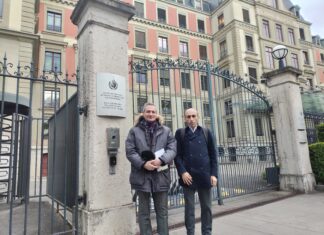MOSCOW — The exhibition Musical Folklore of the Peoples of the Commonwealth of Independent States (CIS) Countries has opened in the Russian State Library (RSL) as part of the programming for the Year of Folk Art and Cultural Heritage of the Commonwealth of Independent States. The exhibition introduces Armenia and its musical heritage through music well as decorative and applied art objects and the national musical instrument duduk provided by the Armenian Museum of Moscow.
The exhibition, which opened on January 25 within the walls of the Russian State Library, presents the most striking examples of musical folklore of the peoples of the CIS countries. The exposition is presented in the chamber hall of the Music Publications and Sound Recordings Department of the Pashkov House.
The importance of the event in strengthening cultural ties between the CIS member countries, among other things, is indicated by the number and rank of the guests who attended the opening of the exhibition. These are representatives of the diplomatic missions of the CIS countries in Moscow, the Ministry of Foreign Affairs of the Russian Federation, the CIS Executive Committee, the Interparliamentary Assembly of the CIS Member States, the Moscow House of Nationalities, the Union of Armenians of Russia, the Armenian Museum of Moscow and other national associations.

The traditional heritage of the Armenian people is represented at the exhibition by songs of Komitas, who laid the foundations of Armenian national music, songs of gusans [“minstrels”], and pieces for the traditional instruments saz, tar, kemanchi and duduk.
“The great Armenian composer Komitas (Soghomon Soghomonyan, 1869-1935) said that the people are the only creators to whom one should go and from whom one should learn. The Armenian people have created an original and diverse musical culture. The treasures of folk art — labor, household, ritual, love, lyrical, comic and other songs and dances — are remembered for their bright melodies, rhythms and profound content. At the exhibition, you can see collections of folk songs and dances arranged by such outstanding representatives of the song culture of Armenia as Christopher Kara-Murza, Alexander Spendiarov, Tatul Altunyan and others,” writes the website of the Russian State Library.
The exhibition opened with a concert, which clearly demonstrated the folklore traditions and modern culture of the participating countries of the event. So, on the stage of one of the halls of the Russian State Library, the singer and composer Marina Manasyan performed her own composition, the song Karmir Erg. Marina is called “the most sensual voice of new Armenian music.” In her work, she skillfully combines the Armenian language and Armenian and Eastern motifs with electronic music.










